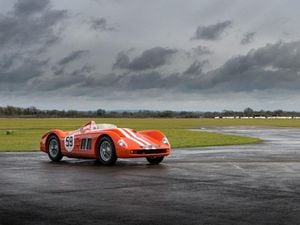Driving a piece of history: Behind the wheel of Skoda’s 1957 1100 OHC Spider
The Skoda 1100 OHC Spider was built in 1957 – and now just two examples are existence. Jack Evans gets the chance to pilot one

When you hear the terms ‘rare’ and ‘sports car’ put together, what sort of image do they conjour up? A Ferrari F40, perhaps. Or maybe even a McLaren F1. We’d bet that the Skoda brand doesn’t spring to mind – but there’s a reason it should.

You see, the Spider’s history is what makes it particularly special. Back in the early 1950s, Skoda’s motorsport involvement was in a rut. The passenger car side of the business was booming, but as a result of pressure the Czech government put on the carmaker to export its vehicles to other Communist countries, very few people in the brand’s home nation could actually get their hands on a car. As a result, not many people wanted to enter their own vehicles into racing. A knock-on effect of this was that very often, Skoda’s own works racers were left to compete against themselves.
Many motorsport engineers were therefore folded into the production line, helping to meet with the demand.
However, a small glimmer of motorsport-related hope remained. In 1956, work began on a special, lightweight racer and the result was the 1100 OHC. It made its first public appearance in 1957, and its competition debut just a year later.


The first thing you notice is simply how tiny it is – it’s just 3,880mm long (a Ford Fiesta is around 4,040mm long) and is 1,430mm wide. It could be mistaken for a child’s pedal car, if it weren’t for the four-stroke engine under the bonnet. Despite pushing out around 90bhp, that’s more than enough power given the car’s waif-like weight of just 550kg.

Despite the narrow tyres appearing little wider than those on a bicycle, the Spider simply grips and grips, clinging on for dear life even at higher speeds. The noise is manic, the wind beats you in the face as it rips over the thin windscreen and 50mph feels at least three times that. It’s an involving experience, that’s for sure. The drum brakes take the most getting used to; there’s little impression that they’re doing anything at all within the first few inches of pedal travel, and then they kick in all of a sudden, sometimes locking the wheels in the process. Speeding up is always fun in a classic car, it’s the slowing down that inevitably becomes the challenge.

It had been quite the experience. But getting behind the wheel of a car with such an interesting heritage was something we’ll never forget.





